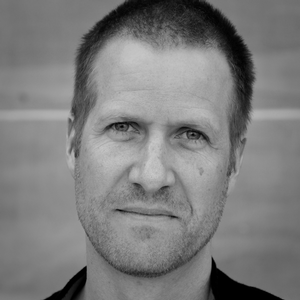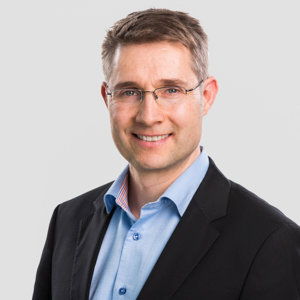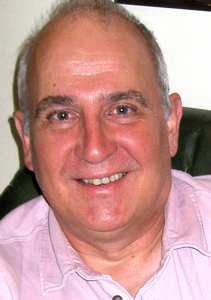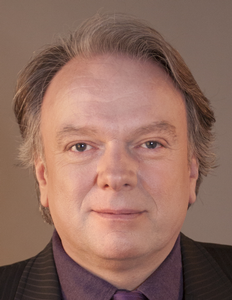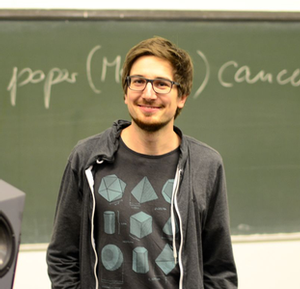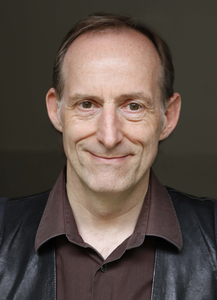AES Milan 2018
Workshop Details
Wednesday, May 23, 09:15 — 10:15 (Scala 3)
W01 - Designing for High Speech Intelligibility
Chair:Dirk Noy, WSDG - Basel, Switzerland
Obtaining a high speech intelligibility in large, voluminous spaces such as stadia or airports can be challenging; however, due to the requirements for audience information and entertainment as well as the criteria for emergency announcements the audio systems play a relevant role in safely operating any large public gathering place. This presentation outlines concepts of designing audio systems for high speech intelligibility. Further topics include the challenges introduced by non-optimal, reverberant room acoustics and their possibly detrimental effects towards Speech Intelligibility. A range of solution strategies will be presented based both on room acoustical and electro acoustical approaches. The presentation will conclude with a number of case studies, including Zurich Airport Checkin 2 Remodeling and KKL Lucerne Concert Hall Electroacoustics Refurbishment.
Wednesday, May 23, 10:00 — 11:30 (Lobby)
W02 - Virtual Reality Audio: B-Format Processing
Chair:Christof Faller, Illusonic GmbH - Uster, Zürich, Switzerland; EPFL - Lausanne, Switzerland
Panelists:
Svein Berge, Harpex Ltd - Berlin, Germany
Ben Sangbae Chon, Gaudio Lab, Inc. - Seoul, Korea
Ville Pulkki, Aalto University - Espoo, Finland
Oliver Thiergart, International Audio Laboratories Erlangen - Erlangen, Germany
B-Format has had a revival in recent years and has established itself as the audio format of choice for VR videos and content. Experts in signal processing and production tools are presenting and discussing latest innovations in B-Format processing. This includes processing on the recording and rendering side and B-Format post-production.
Wednesday, May 23, 11:15 — 12:45 (Scala 3)
W03 - Audio Repurposing Using Source Separation
Chair:Philip Coleman, University of Surrey - Guildford, Surrey, UK
Panelists:
Estefanía Cano Cerón, Fraunhofer Institute for Digital Media Technology (IDMT) - Ilmenau, Germany
Chungeun Kim, University of Surrey - Guildford, Surrey, UK
Jon Francombe, BBC Research and Development - Salford, UK
Jouni Paulus, Fraunhofer IIS - Erlangen, Germany; International Audio Laboratories Erlangen - Erlangen, Germany
Source separation tries to extract sound objects from an existing mixture. In reality, perfect separation is not achievable; the sound quality of single extracted sources is often heavily degraded. Fortunately, if the separated sources are recombined with small alterations in level or position, the degradations are often masked. This workshop discusses using source separation to enable repurposing the original audio content: speech intelligibility can be improved for broadcast listeners or cochlear implant users; sound objects can be extracted from a recording to enable object-based transmission and rendering. It is important to be able to assess the sound quality of the remix and the extent to which audio remixing is possible. We will highlight possible evaluation methods involving listeners and state-of-the-art algorithms.
 | This session is presented in association with the AES Technical Committee on Semantic Audio Analysis |
Wednesday, May 23, 11:15 — 12:45 (Arena 3 & 4)
W04 - Mastering for Digital and Vinyl Distribution
Chair:Magdalena Piotrowska, Gdansk University of Technology - Poland; Hear Candy Mastering - Poland
Panelists:
Margaret Luthar, Chicago Mastering Service - Chicago, IL, USA
Mandy Parnell, Black Saloon Studios - London, UK
Jonathan Wyner, M Works Studios/iZotope/Berklee College of Music - Boston, MA, USA; M Works Mastering
In recent years it has become more common that files destined for digital distribution (iTunes, Tidal, Spotify, etc.) find their way to vinyl release. During this session a brief description of digital distribution release formats and channels, as well as vinyl as a media will be provided. Mastering engineers will discuss differences and specifics of mastering for each of them, as well as commonalities. Discussion will be supported with playback of audio examples.
Wednesday, May 23, 11:45 — 12:45 (Lobby)
W05 - Assessment of Spatial Audio Contents Using the MS-IPM Methodology
Co-chairs:Matthieu Parmentier, francetélévisions - Paris, France
Chris Pike, BBC R&D - Salford, UK; University of York - York, UK
Nick Zacharov, Force Technology, SenseLab - Hørsholm, Denmark
Panelists:
Catherine Colomès, b<>com
Michael Weitnauer, IRT - Munich, Germany
This workshop will explain the MS-IPM methodology that allows the evaluation of several perceptive attributes without anchor, a suitable method to assess spatial audio contents. The discussion will highlight a concrete use-case of this methodology for the assessment of object-based audio contents processed by different production renderers.
Wednesday, May 23, 14:45 — 16:15 (Arena 3 & 4)
W06 - The Art of Vocal Production
Presenters:Wes Maebe, RAK Studios/Sonic Cuisine - London, UK
Barry Marshall, The New England Institute of Art - Boston, MA, USA
Mandy Parnell, Black Saloon Studios - London, UK
Marek Walaszek, Addicted to Music Studio - Warsaw, Poland
Producing great vocals of course requires the best gear chain of microphone, mic pre, etc., as well as a good acoustic space. But what about all of the factors that have nothing to do with gear: atmosphere, drama, mood, psychology, phrasing, coaching, and preproduction? And what about practical considerations like scheduling, comfort level, doubling (or not), harmony, “comping” vs. complete takes, and simply recognizing the peak vocal performance? Our panel will examine these “extra-technical” considerations in getting that great take.
Wednesday, May 23, 17:00 — 18:00 (Lobby)
W07 - Listening Session on Large 3D Audio System
Presenters:Matthias Frank, University of Music and Performing Arts Graz - Graz, Austria
Franz Zotter, IEM, University of Music and Performing Arts - Graz, Austria
Advancements of the past years improve our understanding of large 3D-audio sound reinforcement systems, how to make them successfully supply large audiences with plausible direct, diffuse, and distant sounds, also live. Our lab promotes this by offering free Ambisonic tools for a broad usage, own productions, and by organizing European Student 3D Audio Production Competitions. You are warmly invited to this listening session in which we listen to pieces from the 3D Audio Competition, our Al Di Meola's - Elysium and More live production, and selected other productions.
Thursday, May 24, 09:00 — 10:30 (Lobby)
W08 - Recording Technique for 3D Audio—Can Convenience and Aesthetic Coexist?
Chair:Toru Kamekawa, Tokyo University of the Arts - Adachi-ku, Tokyo, Japan
Panelists:
Hyunkook Lee, University of Huddersfield - Huddersfield, UK
Helmut Wittek, SCHOEPS GmbH - Karlsruhe, Germany
Several formats with height channels have been proposed, such as NHK's 22.2 channel system and the Auro 3D system, which are included in ITU-R BS.2159 standardized in 2012. Recording techniques for these 3D audio formats often include omnidirectional or cardioid microphones settings at certain distances (so-called spaced distribution array). Since these methods require much work for the setting, many methods have been proposed that expand the conventional stereo one-point microphones settings such as ORTF-3D, OCT-3D, Triple M/S Array. Recently Ambisonics is also the focus of the industry attention. In this workshop we compare the differences in impression due to the differences in settings of recording technique of these 3D audio techniques through actual recording examples and discusses how we can accomplish both convenience and aesthetics.
 | This session is presented in association with the AES Technical Committee on Spatial Audio |
Thursday, May 24, 09:00 — 10:30 (Scala 3)
W09 - The State of the Art in Sound Synthesis and Procedural Audio
Chair:Joshua D. Reiss, Queen Mary University of London - London, UK
Panelists:
Stefan Bilbao, University of Edinburgh - Edinburgh, UK
Davide Rocchesso, University of Palermo - Palermo, Italy
Stefania Serafin, Aalborg University - Copenhagen, Denmark
Vesa Välimäki, Aalto University - Espoo, Finland
Sound synthesis covers not just analog and MIDI synthesizers but the full range of algorithmic approaches to sound generation. Similarly, procedural audio is characterized by the philosophy of "sound as process, not samples," Procedural audio has been enthusiastically embraced by the games industry, and sound synthesis in all its forms may revolutionize sound design for animation, games, VR, augmented reality, and across the creative industries. This Workshop gives an overview of recent developments in the field. It brings together leading researchers to explain the key concepts and discuss new approaches and technologies. It will be relevant to practitioners, enthusiasts, and researchers wishing to gain a deeper understanding of this rapidly changing field.
 | This session is presented in association with the AES Technical Committee on Audio for Games and AES Technical Committee on Audio for Cinema |
Thursday, May 24, 10:45 — 12:15 (Lobby)
W10 - New Surround and Immersive Recordings
Presenters:Jim Anderson, Anderson Audio NY - New York, NY, USA; Clive Davis Institute of Recorded Music, New York University - New York, NY, USA
Ulrike Schwarz, Anderson Audio NY - New York, NY, USA
Jim Anderson and Ulrike Schwarz have spent the past year recording and mixing music in high resolution and in immersive formats from New York to Norway to Havana. This presentation will highlight that work.
 | This session is presented in association with the AES Technical Committee on Recording Technology and Practices and AES Technical Committee on Spatial Audio and AES Technical Committee on High Resolution Audio |
Thursday, May 24, 12:15 — 13:45 (Scala 3)
W11 - Deep Learning for Audio Applications
Chair:Konstantinos Drossos, Tampere University of Technology - Tampere, Finland
Panelists:
Qiuqiang Kong, University of Surrey - Guildford, Surrey, UK
Stylianos Ioannis Mimilakis, Fraunhofer Institute for Digital Media Technology (IDMT) - Ilmenau, Germany
Christian Uhle, Fraunhofer Institute for Integrated Circuits IIS - Erlangen, Germany; International Audio Laboratories Erlangen - Erlangen, Germany
Deep learning is currently the most active research field. It has led to impressive improvements over former state-of-the-art methods in, for example, image classification, speech recognition, and text translation.
This workshop introduces the concepts of deep learning and shows how it is applied to various problems of the audio engineering community, e.g., acoustic event detection, signal enhancement, source separation, and classification.
 | This session is presented in association with the AES Technical Committee on Semantic Audio Analysis |
Thursday, May 24, 13:00 — 14:00 (Scala 2)
W12 - AES67 Practical—A Guide on How to Setup AES67 Networks
Presenter:Andreas Hildebrand, ALC NetworX GmbH - Munich, Germany
Since the publication of the AES67 Standard on "High performance Streaming Audio-over-IP Interoperability" in September 2013, a myriad of AES67-compatible devices have been brought to market. Meanwhile, quite a few applications with AES67-compatible devices have been projected and put into operation. This session will give insight and provide tips on system planning, device and network configuration, management, and monitoring.
Thursday, May 24, 13:15 — 14:30 (Arena 3 & 4)
W13 - Object-Based Audio Broadcasting: Practical Aspects
Chair:Matthieu Parmentier, francetélévisions - Paris, France
Panelists:
Dominique Brulhart, Merging Technologies - Puidoux, Switzerland
Rupert Brun, Fraunhofer IIS - Erlangen, Germany
Christophe Chabanne, Dolby Laboratories - Valbonne, France
Michael Kratschmer, Fraunhofer Institute for Integrated Circuits IIS - Erlangen, Germany
Scott Norcross, Dolby Laboratories - San Francisco, CA, USA
This workshop will offer a state of the art of object-based audio for live broadcasting and post-production. The discussion will underline the role of the Audio Definition Model as an open format for production exchange.
Thursday, May 24, 13:30 — 14:30 (Lobby)
W14 - Production of Dance Music in 3D
Presenter:Lasse Nipkow, Silent Work LLC - Zurich, Switzerland
Today's synthesizers produce almost exclusively mono and stereo sounds. Anyone who wants to implement productions for 3D audio must therefore compose corresponding sounds manually. The creation of multichannel sounds requires solid knowledge of psychoacoustics. Impressive 3D pad sounds can be constructed using very similar sounding stereo signals. And a meaningful assignment of sounds in the 3D space is subject to a number of rules. During the presentation, the most important basics of psychoacoustics, which are responsible for an impressive sound of 3D sounds, will be illustrated. In addition, methods how to create corresponding 3D sounds for a dance track, so that they can be played as 3D sounds directly from a keyboard, will be described. Various sound and video examples will be shown.
 | This session is presented in association with the AES Technical Committee on Spatial Audio |
Thursday, May 24, 14:30 — 16:00 (Arena 3 & 4)
W15 - Styling Your Live and Recorded Classical, Jazz, and Acoustic Ensemble Sound
Chair:Ian Corbett, Kansas City Kansas Community College - Kansas City, KS, USA; off-beat-open-hats recording & sound reinforcement
Panelists:
Margaret Luthar, Chicago Mastering Service - Chicago, IL, USA
Magdalena Piotrowska, Gdansk University of Technology - Poland; Hear Candy Mastering - Poland
Kyle P. Snyder, Ohio University, School of Media Arts & Studies - Athens, OH, USA
Venue, ensemble and performers, musical material, engineer's/producer's vision, equipment available, purpose, and logistics. All of these things influence the choices a live recording or live sound engineer makes when planning and recording or reinforcing a live concert or event. Join our panel of live event recording and sound engineers as they discuss how and why they chose the techniques they used for varied classical, jazz, and other acoustic music situations and play some of the results for you. Material and situations presented will range from entry level non-professional ensemble events to professional productions.
Thursday, May 24, 14:45 — 15:45 (Lobby)
W16 - ANTON - Universe in 3D: Ambisonics in Electronic Music Production
Presenters:Pawel Malecki, AGH University of Science and Technology - Krakow, Poland
Szymon Aleksander Piotrowski, Psychosound Studio - Kraków, Poland
We would like to present collaboration between a sound engineer involved in spatial audio perception and ambisonic processing (Pawel Malecki) and a composer, arranger, and musician (Szymon Aleksander Piotrowski). Szymon's music, electronic project "ANTON," relates to interstellar travel and man's desolate journey through the universe. Spacious and three-dimensional thinking during composing inspired Pawel and Szymon to introduce these music concepts in 3D sound using ambisonics. This session includes playback in multichannel system, description of tools used, implementation and mixing process, technical, creative and aesthetic choices during the design process. Part of project "ANTON" (in stereo) is available at: https://www.youtube.com/watch?v=Ae8pwQQFFwY&feature=youtu.be
Thursday, May 24, 15:00 — 16:30 (Scala 1)
W17 - Power Amplification for High Resolution Audio
Presenter:John Dawson, Jade Electronics Ltd - Cambridge, UK
Driving modern passive loudspeakers to realistic levels without audible distortion can be surprisingly demanding—more so when the source is high resolution audio. And, although the peak power levels are much lower, achieving full dynamic range with headphones can also present tricky design problems. This tutorial reviews the various types of linear amplifier—particularly classes A, AB, B, D, G and H - and examines some of the trade offs involved in designing and implementing some recent commercial designs for both speakers and headphones. A number of the author's measurements of real products—not all of them good—will be shown.
 | This session is presented in association with the AES Technical Committee on High Resolution Audio |
Thursday, May 24, 15:30 — 17:00 (Scala 3)
W18 - Recruiting and Training Participants for Listening Tests
Chair:Jon Francombe, BBC Research and Development - Salford, UK
Panelists:
Jan Berg, Luleå University of Technology - Piteå, Sweden
Tore Stegenborg-Andersen, DELTA SenseLab - Hørsholm, Denmark
Todd Welti, Harman International Inc. - Northridge, CA, USA
Listening tests can produce accurate and reliable results when conducted and analyzed correctly. The participants in such tests are an important contributing factor to the quality of results that are obtained. However, recruiting, training, and maintaining a committed panel of expert listeners is challenging, and reporting in scientific publications often lacks detail.
In this workshop, industrial and academic experts will share best practices from their extensive experience of convening listener panels. How can listeners be recruited, assessed, and trained? How should details of the listeners be presented when reporting results? How can diversity in panel membership be ensured? What about ethical issues and data security?
The workshop will feature a number of short presentations and plenty of time for questions and suggestions from the audience.
Thursday, May 24, 16:15 — 17:45 (Arena 3 & 4)
W19 - Microphones—Can You Hear the Specs? A Master Class
Chair:Helmut Wittek, SCHOEPS GmbH - Karlsruhe, Germany
Panelists:
Eddy B. Brixen, EBB-consult - Smørum, Denmark; DPA Microphones
Kelly Kay, Josephson Engineering - Santa Cruz, CA, USA
Hans Riekehof, SCHOEPS Mikrofone GmbH - Karlsruhe, Germany
Martin Schneider, Georg Neumann GmbH - Berlin, Germany
There are numerous microphones available to the audio engineer. It's not easy to compare them on a reliable basis, often the choice of the model is made on the basis of experience or perhaps just habits—or just because it looks nice. Nevertheless, there is valuable information in the microphone specifications. This master class held by well-known microphone experts of leading microphone manufacturers demystifies the most important microphone specs and provides the attendees with up-to-date information on how these specs are obtained and can be interpreted. Furthermore, many practical audio demonstrations are given in order to help everyone to understood how the numbers relate to the perceived sound.
Friday, May 25, 09:15 — 10:15 (Scala 1)
W20 - Stereophonic Techniques for VR and 360º Content
Presenters:Hannes Dieterle, SCHOEPS Mikrofone GmbH - Karlsruhe, Germany
Kacper Sagnowski, SCHOEPS Mikrofone GmbH - Karlsruhe, Germany
Helmut Wittek, SCHOEPS GmbH - Karlsruhe, Germany
In head-tracked binaural audio, the two-channel output is produced by a real-time convolution of a limited number of sources with HRTFs. There are elaborate systems that measure the HRTFs of each individual source. More general solutions define a grid of sources on a sphere. An arbitrary source is then mapped to this grid of sources based on the (higher-order) Ambisonics principle. With this method-utilized by many state-of-the-art binauralizers-it is possible to binauralize stereophonic virtual loudspeakers without performance problems. The workshop will give examples of stereophonic techniques for VR production and will show a workflow suggestion using practical examples. The advantages of using conventional stereo microphone arrays instead of first-order Ambisonics microphones will be shown.
Friday, May 25, 09:30 — 11:00 (Scala 3)
W21 - Beyond AES67, a Better and Unified Experience of the Audio Network
Presenters:Jeff Berryman, Bosch Communications - Claymont, Delaware, USA
Greg Shay, The Telos Alliance - Cleveland, OH, USA
Nicolas Sturmel, Merging Technologies - Puidoux, Switzerland
With the recent publication of the ST2110 standard, and the industry wide adoption of AES67, multi-vendor audio networks become a reality. But AES67 and ST2110 only consider transport on the network, and this is only a small portion of the many features needed to fully integrate a standard based system. This workshop will address the issue of control and monitoring of the audio network by presenting different open initiatives providing a level of unification on the network. The standardized control protocol AES70 (and especially its connection management part), the open interface specification and API for connection management NMOS and some other network oriented tools will be presented by world class experts on the matter before leaving room for a Q&A session.
 | This session is presented in association with the AES Technical Committee on Network Audio Systems |
Friday, May 25, 09:30 — 10:30 (Lobby)
W22 - 10 Years PLOUD in Europe—The Past, Present and Future
Presenters:Florian Camerer, ORF - Austrian TV - Vienna, Austria; EBU - European Broadcasting Union
Eelco Grimm, HKU University of the Arts - Utrecht, Netherlands; Grimm Audio - Eindhoven, The Netherlands
Matthieu Parmentier, francetélévisions - Paris, France
In 2008, the European loudness group PLOUD was founded within the EBU, the European Broadcasting Union. A dedicated tribe of audio enthusiasts set out to conquer peak normalization and its detrimental effects on basically everything, but specifically on audio quality and listener satisfaction. Much has been been achieved in the 10 years since its gestation—but there remain a few loose ends; this was to be expected during such a fundamental change of the way audio is treated.
Florian Camerer, Eelco Grimm, and Matthieu Parmentier are all core members of PLOUD and share different aspects of the work done, being done and to be done.
Florian in his role as the chairman of PLOUD is giving a brief overview of the major changes that have already happened and are now well established. Loudness normalization is now the norm in TV, but other areas in broadcasting are still lagging behind, most notably Radio. An outlook will be given on the most burning issues in this area, under the light of the recent work of AES on Recommended Practices for Streaming.
Eelco will offer a brief update about the work on Loudness in cinema. Topics that will be touched are the relationship between overall electric loudness and the dialog level, some data about acoustic playback levels of movies and the master fader level setting at film festivals, and efforts to come to a new standard for trailers and commercials.
Matthieu will present a view on the activities of France Televisions, also targeting the tricky terrain of loudness in an object-based production environment
Friday, May 25, 11:00 — 12:00 (Scala 3)
W23 - AES67 in Real World Applications
Presenters:Claudio Becker-Foss, DirectOut GmbH - Mittweida, Germany
Andreas Hildebrand, ALC NetworX GmbH - Munich, Germany
Nicolas Sturmel, Merging Technologies - Puidoux, Switzerland
Since the publication of AES67 and its recent adoption by the ST 2110 media over IP standard, we see a growing number of installations and studio built around this standard. This workshop and Q&A session will focus on practical aspects of using AES67 and ST 2110-30 in the field: what are the benefits of using AES67? What are the difficulties? What should I do / not do, when configuring my network? Panelists experienced in real-world applications will provide valuable insights and share opinions on the importance of AES67 and its role as part of ST 2110 for the wider broadcast market.
 | This session is presented in association with the AES Technical Committee on Network Audio Systems |
Friday, May 25, 11:00 — 12:30 (Lobby)
W24 - New Surround and Immersive Recordings: Listening Session
Presenters:Jim Anderson, Anderson Audio NY - New York, NY, USA; Clive Davis Institute of Recorded Music, New York University - New York, NY, USA
Ulrike Schwarz, Anderson Audio NY - New York, NY, USA
Multi-Grammy winner producer and engineer in surround productions Jim Anderson and Ulrike Schwarz have spent the past year recording and mixing music in high resolution and in immersive formats from venues in New York to Norway to Havana. Their recordings have been made in various 3D recording formats and feature solo piano, big band, jazz trio and quartet, and orchestral performances. Mixing has taken place at Skywalker Sound and mastering has been by Bob Ludwig and Darcy Proper. Recordings will highlight performances by Jane Ira Bloom, Gonzalo Rubalcaba, the Jazz Ambassadors, and Norway's Stavanger Symphony Orchestra.
Friday, May 25, 12:00 — 13:30 (Scala 3)
W25 - The Challenge of Loudspeaker Integration in Automotive Audio Applications
Presenter:Alfred Svobodnik, MVOID Group - Karlsruhe, Germany; Wien, Austria
The integration of loudspeakers into a vehicle, both in terms of acoustical and mechanical aspects, is a highly challenging topic. Parasitic vibrations of panels excited by the loudspeaker can lead to significant deterioration of the sound quality. Acoustical short-circuits and Helmholtz resonances are another potential source for performance degradation. This workshop aims to discuss the major challenges of automotive loudspeaker packaging and possible solutions to improve the acoustical quality.
 | This session is presented in association with the AES Technical Committee on Automotive Audio |
Friday, May 25, 12:15 — 13:30 (Scala 1)
W26 - The EBU ADM Renderer
Co-chairs:Chris Pike, BBC R&D - Salford, UK; University of York - York, UK
Michael Weitnauer, IRT - Munich, Germany
Panelists:
Nicolas Epain, b<>com
Thomas Nixon, BBC R&D - Salford, UK
This workshop will introduce the use of the Audio Definition Model to store and distribute Object-Based Audio master files to transport channel, object and scene-based contents.
The discussion will underline the role of OBA renderer within the post-production workflow and introduce EAR, the EBU ADM Renderer recently published as an open-source software.
Friday, May 25, 15:00 — 16:30 (Arena 3 & 4)
W27 - Artificial Intelligence in Your Audio
Chair:Jonathan Wyner, M Works Studios/iZotope/Berklee College of Music - Boston, MA, USA; M Works Mastering
Panelists:
Jonathan Bailey, iZotope
Joshua D. Reiss, Queen Mary University of London - London, UK
AI has been part of the listener's experience for many years . . . . now it is influencing the development of tools made for music production and music creation. We will look at how it is being used, the promise it holds in developing new tools and the challenges it presents for music engineers and producers.
 | This session is presented in association with the AES Technical Committee on Recording Technology and Practices |
Friday, May 25, 16:30 — 18:00 (Scala 1)
W28 - Mixing VR Being in VR
Presenters:Daniel Deboy, DELTA Soundworks - Germany
Christian Sander, Dear Reality GmbH - Germany
Mixing Virtual Reality (VR) content such as 360° Film can be a frustrating job. Current workflows either show an equirectangular projection of the 360° film or just a small portion of the full view on regular 2D Displays, next to the common DAW environment. A representation of the audio objects as an overlay may help to map the object to the correct visual location, but is not a replacement of viewing the film with a head mounted display (HMD). We present a new workflow that enables the engineer to mix object based audio directly in VR without leaving the HMD.
Saturday, May 26, 09:30 — 11:00 (Lobby)
W29 - Spatial Audio Microphones
Chair:Helmut Wittek, SCHOEPS GmbH - Karlsruhe, Germany
Panelists:
Gary Elko, mh acoustics - Summit, NJ USA
Johannes Kares, Sennheiser - Vienna, Austria
Hyunkook Lee, University of Huddersfield - Huddersfield, UK
Oliver Thiergart, International Audio Laboratories Erlangen - Erlangen, Germany
Tomasz Zernicki, Zylia sp. z o.o. - Poznan, Poland
Multichannel loudspeaker setups as well as Virtual Reality applications enable Spatial Sound to be reproduced with large resolution. However, on the recording side it is more complicated to gather a large spatial resolution. Various concepts exist in theory and practice for microphone arrays. In this workshop the different concepts are presented by corresponding experts and differences, applications as well as pros and cons are discussed. The different array solutions include coincident and spaced Ambisonics arrays as well as Stereophonic multi-microphone arrays.
 | This session is presented in association with the AES Technical Committee on Microphones and Applications |
Saturday, May 26, 10:30 — 12:00 (Scala 1)
W30 - Involving Performers’ Creativity in Innovative Audio Research
Co-chairs:Jan Berg, Luleå University of Technology - Piteå, Sweden
Amandine Pras, University of Lethbridge - Lethbridge, Alberta, Canada
Panelists:
Valentin Bauer, Paris Conservatoire (CNSMDP) - Paris, France
Dimitri Soudoplatoff, CNSMDP - Paris, France
Petter Sundkvist, Luleå University of Technology - Piteå, Sweden
With a multidisciplinary panel of performers and researchers, this workshop highlights the benefits of examining the impact of sound engineers’ manipulations of acoustics and audio technology on musical performance and creative decisions. Based on previous studio and stage experiments that involved orchestra conductors and instrumentalists, we discuss novel research approaches that incorporate Audio in the emergent fields of Performance Science and Creative Cognition to study how performers are affected by sound, e.g. when monitoring in binaural to improvise in studio and when performing in venues with different acoustic conditions. Whereas performers’ feedback can inform the development of innovative audio technology, our studies can make musicians more aware of sound engineering possibilities and hall acoustics’ impact, also providing students with a broader perspective on artistic practices.
This workshop will be addressed to students, researchers and technology developers who want to discuss novel approaches to study the interconnections between technology/acoustics and musical performance/creativity.
Saturday, May 26, 11:15 — 12:15 (Lobby)
W31 - Introducing the IEM Plug-in Suite
Presenter:Daniel Rudrich, Institute of Electronic Music and Acoustics Graz - Graz, Austria
The "IEM Plug-in Suite" is a free and open-source audio plug-in suite created by staff and students at IEM. It features 3D higher-order Ambisonic plug-ins up to 7th order including encoders, decoders, surround visualizer, dynamic processors, and delay and reverb effects, which also allow to auralize directional sources. Moreover, the plug-in suite includes a tool to design Ambisonic decoders for arbitrary loudspeaker layouts employing the AllRAD and imaginary-loudspeaker downmix approach. All implementation is research-driven, and the suite is meant to continuously grow by recent developments, e.g., improvements in binaural Ambisonic rendering. The workshop presents the plug-ins and practically demonstrates the basic applications and workflow in Reaper.
Saturday, May 26, 12:30 — 13:15 (Lobby)
W32 - Comparison of Stereophonic, Assembled Stereo and First-Order Ambisonic Recordings for VR and 360° Content
Presenters:Hannes Dieterle, SCHOEPS Mikrofone GmbH - Karlsruhe, Germany
Kacper Sagnowski, SCHOEPS Mikrofone GmbH - Karlsruhe, Germany
For the research concerning multichannel microphone techniques for VR or 360° videos, several examples have been recorded using either stereophonic approaches (3D microphone arrays, assembled stereophonic ambiences) or first-order Ambisonic recordings. The differences in sound that those techniques produce will be shown and discussed in this listening session.
Saturday, May 26, 13:30 — 14:30 (Lobby)
W33 - The 5th Element-How a Sci-Fi Classic Sounds with a New 3D Audio Mix
Presenter:Tom Ammermann, New Audio Technology GmbH - Hamburg, Germany
The 5th Element it's certainly a milestone in Sci-Fi film history. Recently it was completely overworked doing a completely new film scan in 4k and mixing the whole audio elements again in Dolby Atmos and Headphone Surround 3D. This version was released in Germany as UHD Blu-ray and offers a fantastic new adventure of this great production form Luc Besson.

